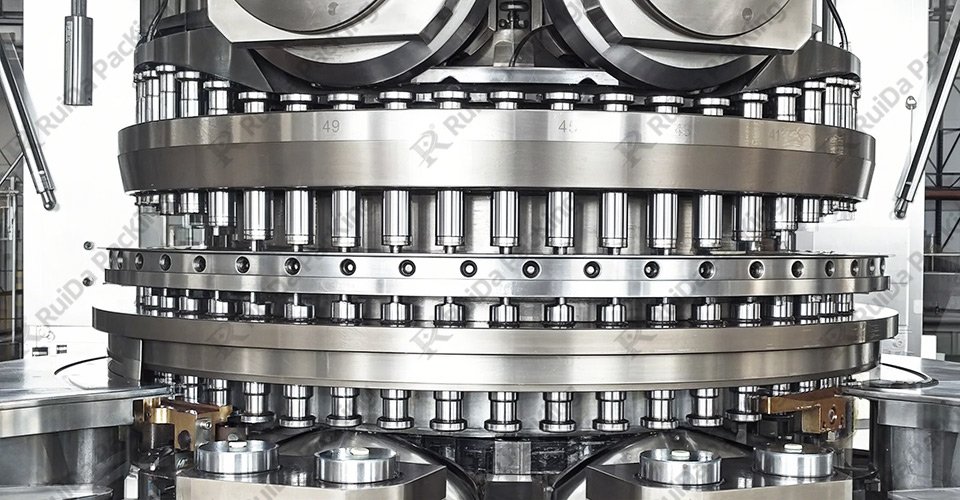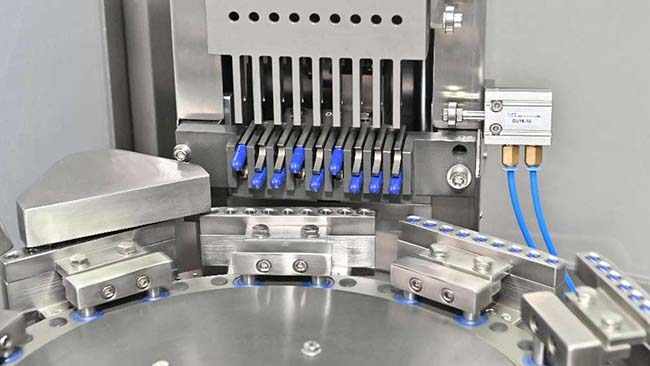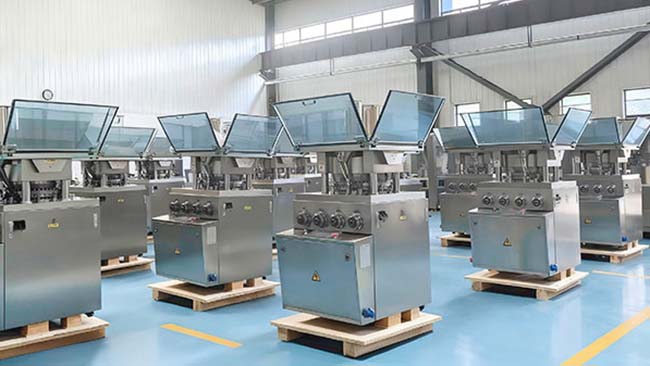In tablet manufacturing, the دستگاه پرس قرص is a critical piece of machinery. Its operation directly affects the quality of the tablets, production efficiency, and overall compliance. However, using a tablet press can sometimes present various challenges, such as capping, sticking, lamination, and uneven tablet weight. These issues not only reduce production capacity but also increase costs due to wasted materials. To resolve these common tablet issues, it is essential to understand the causes behind them and implement the right solutions to ensure smoother operations and higher product quality.

Overview of Common Tablet Issues
When operating a دستگاه قرص سازی, issues such as capping, sticking, lamination, chipping, and weight variation are commonly encountered. These problems can arise from improper machine setup, inconsistencies in raw materials, or changes in the manufacturing environment. Each problem can affect the tablet’s appearance, stability, and efficacy. Fortunately, many of these issues can be addressed by adjusting production parameters, optimizing material formulations, and ensuring proper machine maintenance.
Capping Issues
Capping occurs when the top layer of the tablet separates or cracks after compression, often due to uneven pressure distribution or insufficient binding agents in the formulation. This problem is one of the most common encountered in tablet production and typically manifests during the ejection process or soon after.
Solutions:
– Adjust the pressure settings of the tablet press to ensure even pressure distribution during compression.
– Increase the proportion of binding agents in the formulation to enhance particle cohesion and reduce the likelihood of capping.
– Improve the smoothness of the dies to reduce resistance during ejection.
By making these adjustments, you can significantly minimize the occurrence of capping and ensure that the tablets maintain their structural integrity.
Sticking Issues
Sticking happens when the tablet material adheres to the punch face or die, which can cause tablets to have rough surfaces or even break. Sticking is often related to high moisture content in the material or issues with the excipients used in the formulation.
Solutions:
– Control the moisture content of the tablet material by using drying agents or improving material storage conditions to reduce excess humidity.
– Regularly clean and polish the punches and dies to ensure they remain smooth and free from residues.
– Add anti-adherent agents like talc or magnesium stearate to the formulation to reduce sticking.
Proper moisture control and die maintenance are crucial for preventing sticking, while optimizing the formulation will further reduce the chances of this issue.
Lamination Issues
Lamination refers to the separation of the tablet into distinct layers, which can occur due to insufficient pressure during compression or poor granulation. Laminated tablets can break easily, compromising product quality.
Solutions:
– Increase the pressure on the tablet press to ensure that the granules are tightly compressed into a solid form.
– Review the granulation process to ensure that the particle size is uniform and that the granules have good flow properties.
– Introduce better binders into the formulation to enhance tablet cohesion and prevent layer separation.
By making these adjustments, you can ensure that your tablets form properly during compression and that lamination is avoided.
Chipping Issues
Chipping occurs when the edges of the tablets break off or become damaged, often caused by excessive tablet hardness or improper handling after compression. This can lead to cosmetic defects and affect the product’s stability during packaging and transportation.
Solutions:
– Reduce the tablet hardness by adjusting the pressure applied during compression, ensuring that the tablets are durable but not overly hard.
– Improve the drying process to ensure that the tablets are not over-dried, which can cause them to become brittle and prone to chipping.
– Apply a protective coating to the tablet surface to shield it from damage during handling and transportation.
By optimizing the hardness and ensuring proper handling, you can prevent chipping and maintain the tablets’ structural integrity throughout the production process.
Weight Variation Issues
Tablet weight variation is another critical issue in tablet production, leading to inconsistent doses and potential regulatory concerns. This problem is usually caused by inconsistent material flow or an unstable filling system.
Solutions:
– Improve the consistency of the feed system to ensure that the same amount of material is delivered for each tablet.
– Use materials with better flow properties to ensure uniform distribution within the die cavity.
– Regularly calibrate the tablet press to maintain precision in the filling and compression processes.
Ensuring consistent material flow and proper machine calibration will reduce weight variation, leading to more uniform tablets and improved product quality.
Preventing Common Tablet Press Issues
To avoid common tablet issues before they occur, adopting preventive measures is essential. Regular machine maintenance, keeping equipment clean, monitoring the production environment (especially humidity and temperature), and using high-quality raw materials are all important steps to ensure smooth tablet production. Proper equipment upkeep and production control will reduce machine downtime, improve equipment efficiency, and ensure consistent quality in every batch.
Preventive Measures Table
Common Issue | Preventive Measures |
Capping | Adjust pressure, improve die smoothness, increase binder proportion |
Sticking | Control moisture, clean and polish dies, increase anti-adherents |
Lamination | Increase pressure, optimize granulation, add better binders |
Chipping | Reduce hardness, control drying, apply protective coating |
Weight Variation | Improve feed system, use better-flowing materials, regularly calibrate equipment |
By implementing regular inspections, maintaining the equipment, and optimizing production methods, you can greatly reduce the occurrence of these tablet problems and increase overall manufacturing efficiency.
نتیجهگیری
Common tablet issues like capping, sticking, lamination, chipping, and weight variation can present challenges during tablet production, but each issue has specific causes that can be addressed through targeted solutions. By focusing on regular equipment maintenance, monitoring the production environment, and optimizing tablet formulations, you can enhance product quality and reduce downtime. Maintaining vigilance in the production process is key to ensuring that each tablet meets the desired quality standards.


